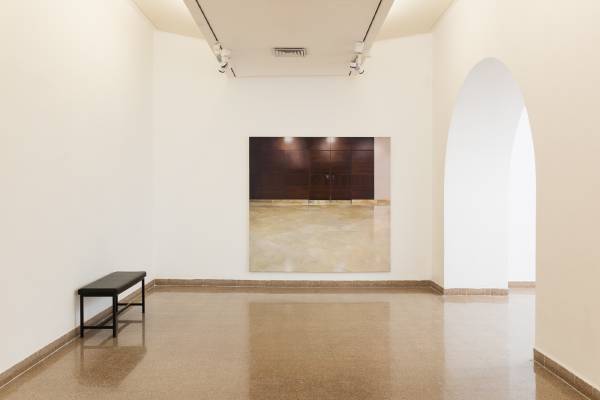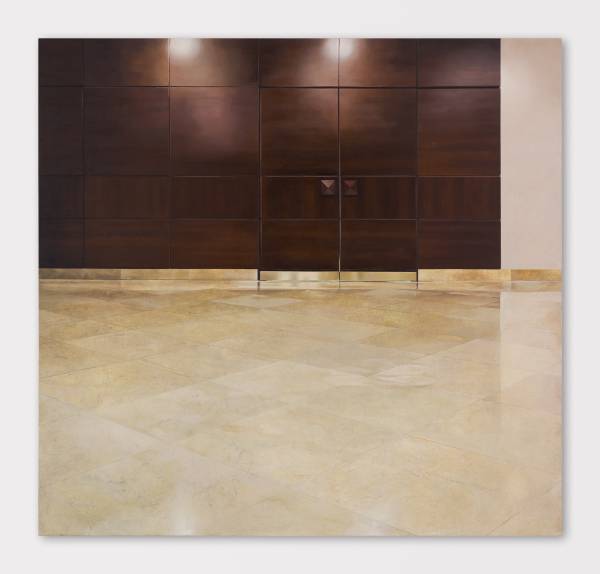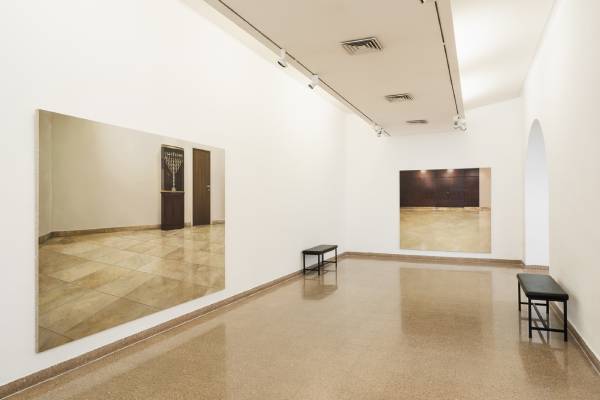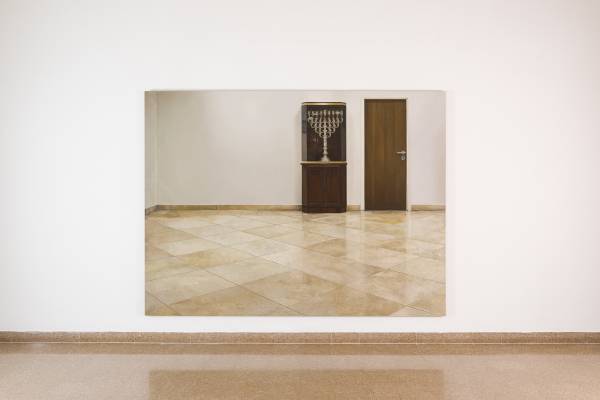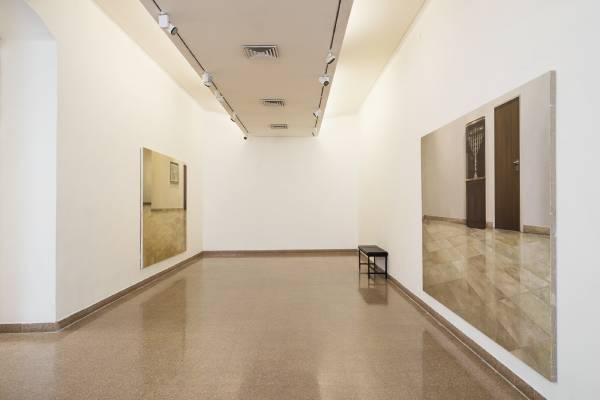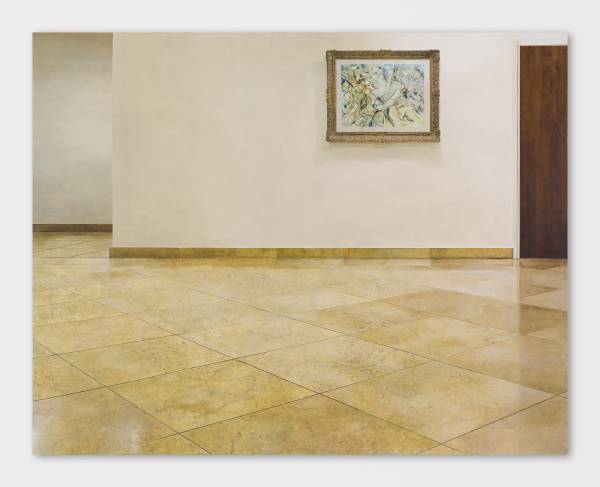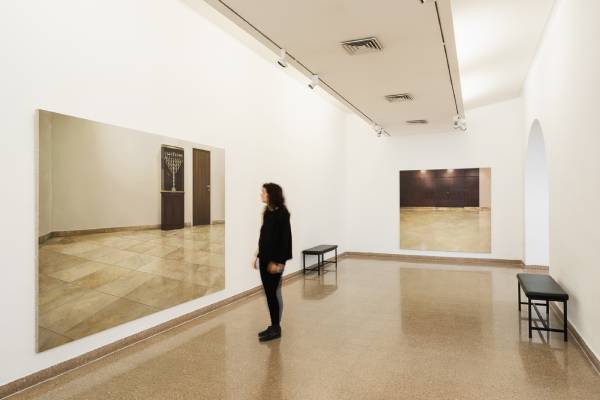Osnat Yaheli-Sarbagili
Mishkan
Jerusalem Artists' House
March 16 - May 11, 2019
Osnat Yaheli-Sarbagili's new body of work, Mishkan, spans interior views of the Israeli Parliament (Knesset). The artist, whose paintings frequently depict intermediate spaces between the public and the private—entrances to residential buildings, bank lobbies, giant decorative planters, etc.—does not turn to the Knesset's representatives spaces, such as the plenum, the government room or the Chagall hall, but rather to the functional spaces of the building: hundreds of square meters of generic construction, uniform despite their divergence, which display rich materiality and an ornate design language of elegant marble floors, polished wood cladding, gilded banisters, and other details conveying prestige and power.
Working on large formats, Yaheli-Sarbagili constitutes restrained minimalistic arenas sampled from the Knesset corridors in her paintings. In the lack of narrative occurrence, the drama is refined from the silence and cleanliness arising from them, as well as from the very decision to present frames which have ostensibly been cut off from a whole architectural continuum, like a suspended cinematic close-up. The lack of human presence, in turn, reinforces the tension underlying the image, infusing it with a sense of alienation.
To some extent, the height of the drama lies in the materiality typical of these spaces. It is skillfully translated via painterly strokes which realize the full potential concealed in the material wealth: the marble, wood veneer, and wood surfaces, the glass panels, the paint on the walls—all these are so radiant that they reflect their surroundings. The painting is so meticulous that the painted image appears like an improved, yet absolutely artificial embodiment of the real reference.
The hyper-realistic touch is elusive, however, since the realistic appearance is a preplanned outcome of engineered actions: the stylized compositions are, in fact, based on digitally processed photographs—a preliminary process associated with graphic art more than with figurative painting. The artist thus lowers the vantage point (to produce magnification); she cleans the photographs of "background noises" (to enhance the sense of void), and adds lighting effects (to emphasize the textural wealth). The works are no longer a faithful representation of reality, but rather an extreme version of the existent, like an ironic response to the elegant-official aesthetics associated with public buildings in general, and with the Knesset in particular, as the country's foremost public building.
Sally Haftel Naveh

